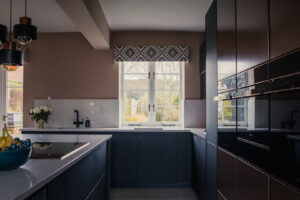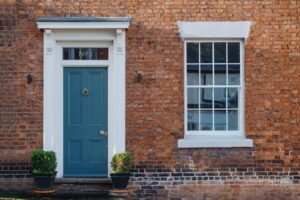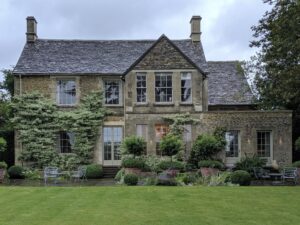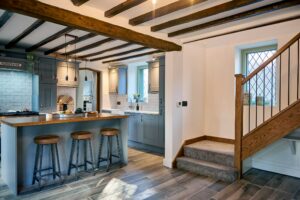Parts of a Sash Window
Understanding the key components of a sash window helps in the restoration process:
- Sashes – The glazed timber frames that move vertically in the box.
- Frame/Box – The outer structure that houses the sashes and counterweights.
- Glazing Bars – Moulded bars that divide and hold the sashes glass.
- Pulleys – The wheel that allows the cord and weights to travel.
- Cords – This is the connecting fabric that connects the sash to the counterweights.
- Weights – Counterbalances the sashes for weightless movement.
- Staff Bead – This is the timber beading that sits internally holding in the lower sash to the box frame
- Parting Bead – This is the thin beading that separates the two moving sashes.
- Ironmongery – Includes fasteners, lifts, stops, and handles for operation and security.
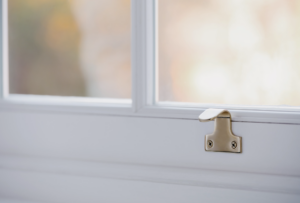
The General Sash Window Restoration Process
Sash window restoration follows a structured process to ensure they look and function like new:
- Staff & Parting Beads are carefully dismantled and cords are cut, allowing the sashes to be removed.
- The frame and sashes are inspected and all rotten timber, broken glass, and loose putty are renewed.
- The pulleys, hardware and cords are replaced. The sashes are re-weighed and correctly balanced.
- Any bare timber on the frame and sashes is then primed.
- Sashes are re-fitted and hung back into the frame and insulating staff and parting beads are precisely mitred and installed.
- The sashes are tested for perfect balance, locking, and draught exclusion, and any new fasteners or furnishings are installed.
Frame Restoration
The window frame plays a crucial role in durability and weather tightness. It is essential to identify and remove any rotten wood from the window frame to restore functionality and maintain a watertight seal. Any rotten or damaged wood is removed and replaced with hardwood to offer maximum durability. Where minor repairs are needed, an epoxy-based resin is applied to reinforce the timber. After repairs, the frame is sanded, primed, and repainted, sealing it against future damage. A well-maintained frame prevents further decay, improves thermal efficiency, and ensures a tight seal around the sashes.Ironmongery
The small metal components of a sash window, such as pulleys, fasteners, lifts, stops, and handles, are essential for functionality and security.
- Pulleys help the sashes move smoothly.
- Window fasteners keep the sashes securely shut.
- Sash lifts and handles allow easy operation.
- Sash stops restrict opening for safety and ventilation control.
Glass Replacement and Glazing
Replacing or reglazing a sash window enhances insulation and soundproofing. Original glass can be cleaned and reinstalled, but broken or inefficient single glazing can be replaced with energy-efficient options like:
- Heritage-style glass that replicates traditional designs.
- Double glazing for better insulation without compromising aesthetics.
- Secondary glazing, a discreet option for listed buildings.
Draught-Proofing
Draught-proofing significantly improves energy efficiency and comfort. Traditional sash windows require a small gap for movement, which can lead to unwanted airflow. Weatherproofing techniques include:
- Weather stripping – A rubber or brush pile seal added to the frame.
- Draught-proofing beads – Fitted around the sashes to stop cold air entry.
Painting and Sealing Sash Windows
Painting is the final layer of protection for sash windows, shielding the timber from moisture and decay. The process involves:
- Applying primer – Helps paint adhere and protects the wood.
- Using exterior-grade paint – Provides durability against the elements.
- Applying multiple coats – Ensures a smooth, long-lasting finish.
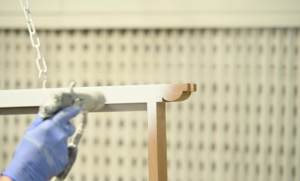
Top Tips for Sash Window Restoration
Restoring sash windows can be a rewarding project, but it’s important to approach it with care and attention to detail. Here are some top tips to help you achieve the best results:
- Consult a Professional: If you’re unsure about any aspect of the restoration process, it’s wise to seek advice from a professional. Their expertise can help you avoid costly mistakes and ensure a high-quality finish.
- Use Traditional Techniques: Whenever possible, use traditional techniques and materials to maintain the original character of your sash windows. This approach preserves the historical integrity of your property.
- Work Methodically: Take your time and work methodically through each stage of the restoration process. Rushing can lead to errors and a subpar finish.
- Invest in Quality Materials: High-quality materials and tools are essential for a durable and long-lasting restoration. Don’t skimp on these items, as they can make a significant difference in the final result.
- Consider Secondary Glazing: Adding secondary glazing can improve the energy efficiency of your sash windows and reduce noise pollution. This modern upgrade can be done discreetly, preserving the window’s traditional appearance.
Advantages of Restoring Your Sash Windows
Restoring sash windows offers several benefits beyond just improving their appearance. A well-restored sash window enhances energy efficiency, reduces draughts and noise, and improves security with updated hardware. It also helps maintain the historical integrity of period properties, which is especially important for listed buildings and conservation areas. Ensuring the top sash functions properly is crucial for achieving optimal ventilation and preventing damage to other components within the sash window system. Restoration is often more cost-effective than full replacement, preserving original materials while extending the window’s lifespan.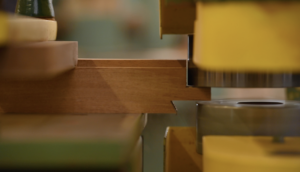
Sash Window Replacement
If restoration is not possible due to severe rot, structural damage, or poor insulation, sash window replacement may be the best option.
When to Replace Sash Windows
- The frame and sashes are beyond repair.
- The window no longer opens or closes properly.
- Poor insulation is causing high energy bills.
- The property requires modern security upgrades.
Replacement Options
- Like-for-like timber sash windows – Maintain the property’s period look with improved durability.
- Double-glazed sash windows – Enhance insulation and soundproofing.
- Secondary glazing – Ideal for listed buildings to improve efficiency while keeping the original windows intact.


